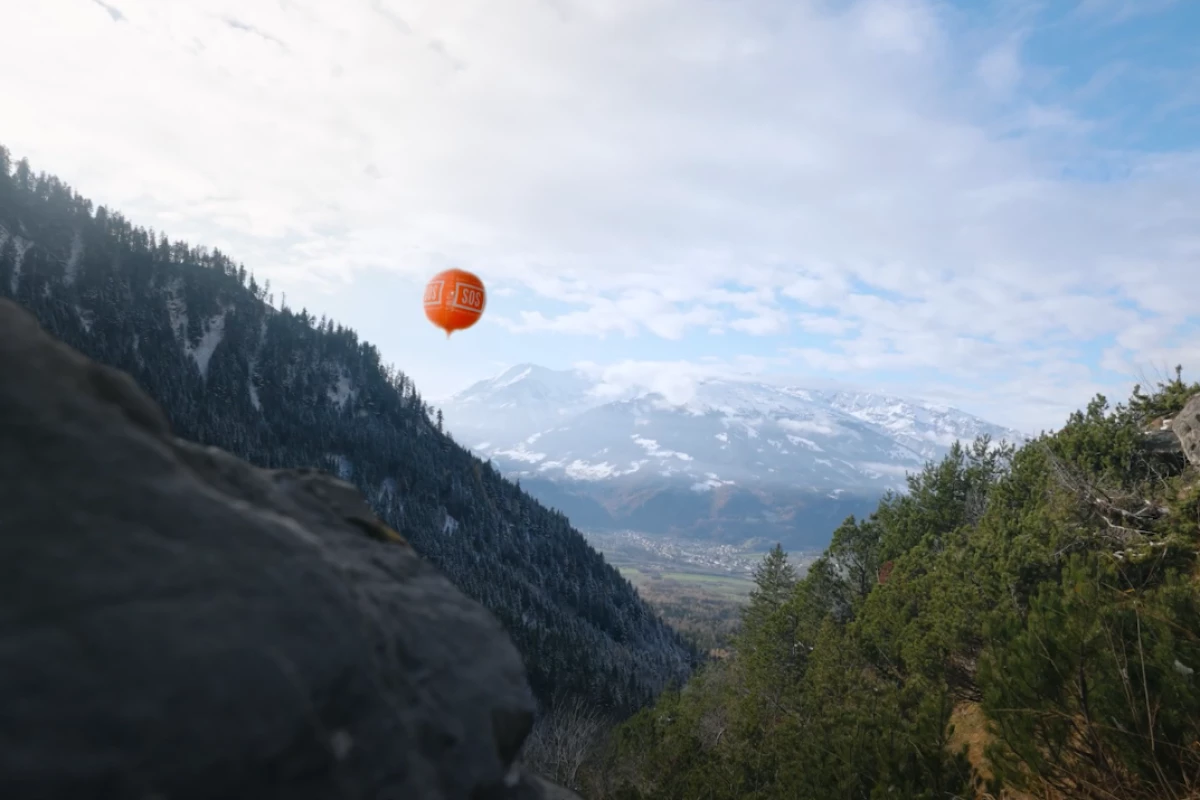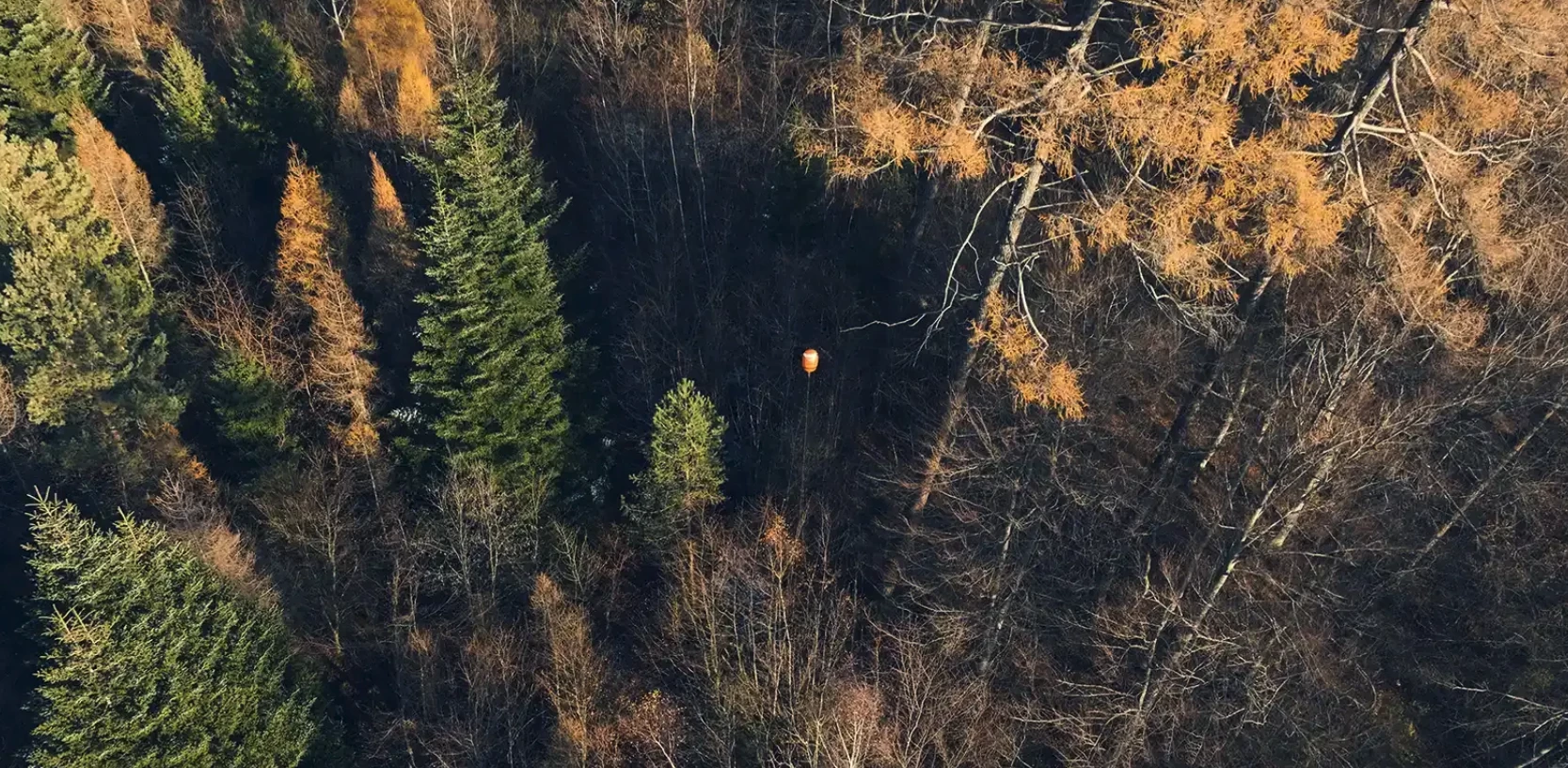Even with smartphones, RV-ready Starlink internet and personal rescue beacons, the wilderness can be a hostile, unstable place that leaves you incapacitated and stranded in an instant. It pays to have a backup plan and even a backup to the backup.
Swiss startup Airmarker delivers that type of added safety layer in a bid to help both wilderness adventurers and search and rescue (S&R) teams. Its all-new survival beacon sends up a visual signal that lasts much longer than a flair and works regardless of cellular or satellite coverage. It rises above trees, peaks and cliffs, where it can identify a victim's location from the ground and air.
The Swiss seem to love themselves some bright-orange mountain rescue balloons. The minute I spotted the all-new Airmarker, it transported my mind back 12 years to one of my first articles here at New Atlas, then Gizmag. It concerned a device called the Rotauf MRK5, an avalanche safety gadget that auto-inflated an orange balloon attached to the user via a rope. The balloon was designed to float atop the snow, even if the skier was buried by the avalanche, with the intent of saving invaluable minutes when locating and digging out the victim, helping boost their chances of survival.

Airmarker's balloon floats in the air, not snow, but is designed with the same motivation: Shave time off of victim location to improve their survival chances. It might seem redundant in that aforementioned world of cellular and satellite comms and simple alternatives like emergency whistles, lights, Recco reflectors and flares, but Airmarker co-founder and CEO Rico Dürst doesn't think so.
Dürst spent many hours in the cockpit of a helicopter searching for missing and injured persons on the ground. A helicopter might make it easier to cover a lot of ground quickly, but it's certainly not easy to pick out a person on the ground from high above, even if you're lucky enough to have a general idea where to look. And good luck hearing a whistle over the thundering chatter of chopper blades.
Dürst repeatedly found himself squinting desperately from that chopper cockpit, thinking: "If only this lost, injured person was holding onto something as simple as a balloon, they'd be on board and headed back to safety."
In 2021, after hearing the story of a rescue that was delayed for hours because the victim's location was obscured by poor visibility and a rocky outcropping despite the fact that the S&R team had zeroed in on a precise search area, Dürst decided there was something to his balloon idea. He turned to longtime colleague Daniel Wattenhofer for help, brought on a team of designers and sports business veterans, and began penning the Airmarker story.

In the intervening years, Airmarker developed what it now markets as the R.One, a fairly simple, straightforward device that serves its mission. The 2-lb (890-g) unit's cylindrical form makes it fairly easy to slide in a backpack. In the event of an emergency, the user simply twists the bottom dial, which activates the helium canister-driven balloon inflation. The user then pulls the tethered balloon and lets it float upward as high as 147 feet (45 m) directly above, clearly marking his or her exact location with its easy-to-spot luminous bright-orange color.
The R.One base unit features an integrated carabiner-style clip designed to attach the device to an anchor point like a rock or tree branch so it doesn't fall off a cliff, blow away in strong winds, or otherwise get lost or pushed out of place. The balloon is designed to remain in the air for up to three days, giving rescuers time to identify it and get to the victim.

The R.One is not designed for user reload; instead, Airmarker says owners can send their unit back for replacement at a "special price" after deployment. Hopefully that price is not much more than the postage necessary to send it back and forth because it feels like a product that shouldn't be constrained by a single-use design.
The R.One is available for preorder now for a price of CHF/€199 (approx. US$225). Airmarker started production last month and plans to begin the first deliveries in April. It also plans the future launch of a global version for the US and other non-European markets, as well as more specific models aimed at activities like water sports.

The video makes clear exactly how the Airmarker can work in the wild and what types of activities for which it could prove a lifesaver. One particular highlighted circumstance in which it could be valuable is getting stuck in a crevasse, which would obscure one's view of the sky, incapacitating even satellite communication equipment, and also make one virtually impossible to spot on a search-and-rescue mission. The Airmarker balloon, by contrast, is nearly impossible to miss against a white snow-covered backdrop.
Source: Airmarker













